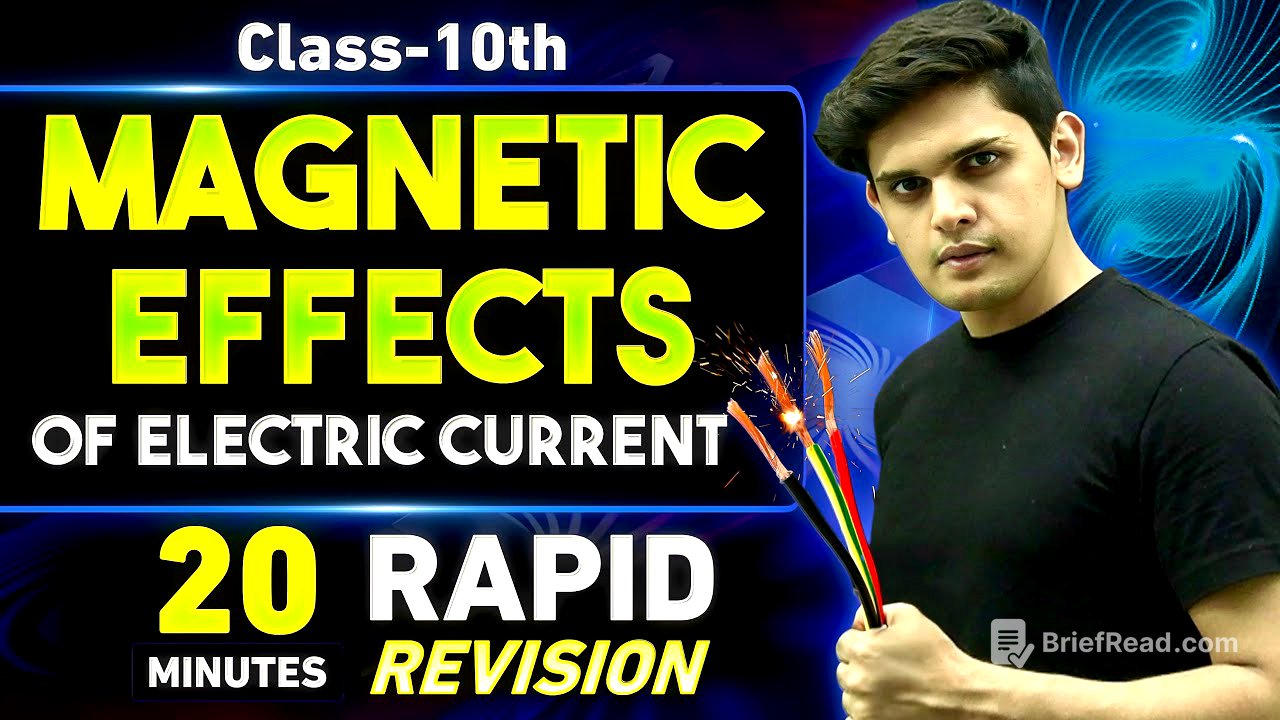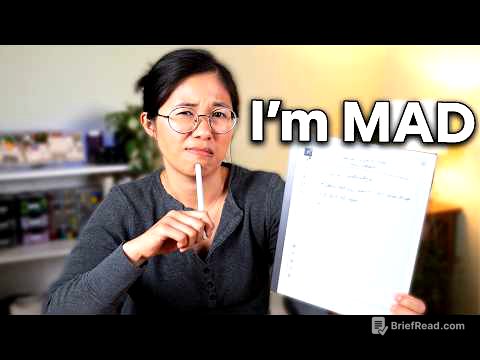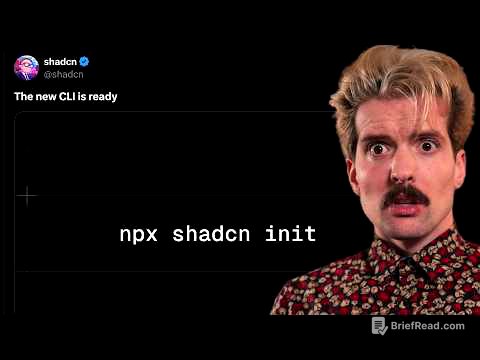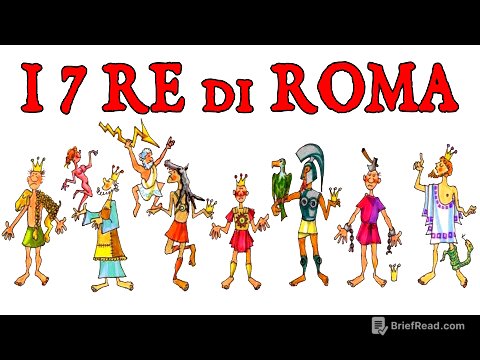TLDR;
This video provides a rapid revision of the chapter "Magnetic Effect of Current," covering key concepts in approximately 15-20 minutes. It begins by discussing the origins of magnetism, including Earth's magnetism, magnetic metals, and the magnetic effect of moving charges, referencing Christian Oersted's experiment. The discussion extends to bar magnets, magnetic fields, magnetic field lines and their properties, Maxwell's right-hand thumb rule, magnetic fields due to current-carrying loops and solenoids, electromagnets, factors affecting the strength of magnetic fields, differences between electromagnets and permanent magnets, forces on current-carrying conductors, Fleming's left-hand rule, domestic circuits (AC vs. DC), types of wires (live, neutral, earth), short circuits, overloading, and electrical fuses.
- Explains the relationship between electricity and magnetism.
- Covers properties of magnets and magnetic fields.
- Discusses safety measures in domestic circuits.
Introduction to Magnetism [0:00]
The video introduces the concept of magnetism, explaining that it can be observed in three forms: Earth's natural magnetism due to its rotation and the presence of magnetic metals like nickel and cobalt, and through the movement of electric charges (current). Christian Oersted's experiment demonstrated that electric current creates a magnetic field, causing a nearby magnetic needle to deflect. This discovery is fundamental to understanding the relationship between electricity and magnetism, which is the focus of the chapter.
Bar Magnets and Magnetic Fields [1:51]
The discussion covers the basics of bar magnets, including the existence of north and south poles and the principle that like poles repel while opposite poles attract. It highlights that breaking a bar magnet results in two new magnets, each with its own north and south poles. The concept of a magnetic field is introduced as the area around a magnet where its magnetic force can be felt. Magnetic field lines are defined as imaginary lines that represent the magnetic field, originating from the north pole and terminating at the south pole outside the magnet, and running from south to north inside the magnet, forming closed loops.
Properties of Magnetic Field Lines [3:26]
The properties of magnetic field lines are explained, emphasizing that these lines always form closed loops, never intersect, and their density indicates the strength of the magnetic field. Specifically, the magnetic field is stronger where the lines are closer together, such as at the poles of a magnet. A tangent drawn to a magnetic field line at any point indicates the direction of the magnetic field at that point. These properties are crucial for understanding and visualizing magnetic fields.
Maxwell's Right-Hand Thumb Rule [4:55]
Maxwell's right-hand thumb rule is introduced as a method to determine the direction of the magnetic field around a current-carrying wire. According to this rule, if you point your right thumb in the direction of the current, the direction in which your fingers curl indicates the direction of the magnetic field. For a straight wire carrying current upwards, the magnetic field forms concentric circles in an anticlockwise direction, while for a downward current, the field is clockwise. This concept is demonstrated with examples and an experiment involving iron filings forming concentric circles around a current-carrying wire.
Magnetic Field of Current Carrying Loop and Solenoids [7:41]
The magnetic field around a current-carrying loop is described, noting that the field lines form circles around the wire but are straight at the center of the loop. A solenoid, which is a coil of many loops, creates a magnetic field similar to that of a bar magnet, with a strong, uniform field inside the coil and field lines emerging from the north end and entering the south end. Unlike a permanent magnet, a solenoid's magnetic field exists only when current is flowing, making it an electromagnet.
Electromagnets and Factors Affecting Magnetic Field Strength [10:38]
An electromagnet is defined as a magnet powered by electricity, often used in applications like cranes to lift heavy objects. The strength of the magnetic field in a solenoid depends on several factors: the number of turns in the coil, the amount of current flowing through it, the radius of the coil, and the material of the core inside the solenoid. Soft iron is commonly used as a core material to enhance the magnetic properties.
Electromagnets vs. Permanent Magnets [12:07]
The differences between electromagnets and permanent magnets are outlined. Electromagnets can change their magnetic strength by adjusting the current, and their polarity can be reversed by changing the direction of the current. They lose their magnetism when the current is switched off and require electricity to maintain their magnetic field. In contrast, permanent magnets have a fixed magnetic strength and polarity, and do not require electricity to function.
Forces on Current Carrying Conductor and Fleming's Left-Hand Rule [12:59]
The principle that a current-carrying wire experiences a force in a magnetic field is introduced, leading to the explanation of Fleming's left-hand rule. This rule helps determine the direction of the force on the conductor. By aligning the thumb, index finger, and middle finger of the left hand perpendicularly, with the index finger pointing in the direction of the magnetic field and the middle finger pointing in the direction of the current, the thumb indicates the direction of the force. The mnemonic "Father, Mother, Children" is used to remember that Force, Magnetic field, and Current are represented by the thumb, index finger, and middle finger, respectively.
Applying Fleming's Left-Hand Rule [14:44]
The application of Fleming's left-hand rule is further explained with examples, including scenarios with alpha particles and electrons. It's noted that a "cross" symbol indicates an inward magnetic field, while a "dot" indicates an outward magnetic field. When dealing with electrons, it's crucial to remember that the direction of the current is opposite to the direction of electron flow due to their negative charge.
Domestic Circuits: AC vs. DC [16:37]
The discussion transitions to domestic circuits, differentiating between alternating current (AC) and direct current (DC). AC is used for long-distance transmission and changes direction periodically, with a frequency of 50 Hz in India and 60 Hz in some other countries. DC, used in batteries, flows in one direction and cannot travel long distances efficiently. AC is generally cheaper to generate than DC.
Types of Wires in Domestic Circuits [17:56]
The three types of wires used in domestic circuits are described: live (red), neutral (black), and earth (green). Live wires carry the current, neutral wires return the current, and earth wires provide a path for leaked charges to the ground, preventing electric shocks. The earth wire is connected to appliances to ensure that any leakage current is safely directed to the ground.
Short Circuit, Overloading, and Electrical Fuses [19:34]
The video explains short circuits, which occur when live and neutral wires come into contact, creating a low-resistance path that causes a very high current flow, potentially leading to fire. Overloading happens when too many appliances are connected to a single circuit, drawing more current than the circuit can safely handle, which can cause the wires to overheat and melt. Electrical fuses are safety devices with a low melting point that break the circuit when excessive current flows, protecting appliances from damage due to overvoltage or high loads.









